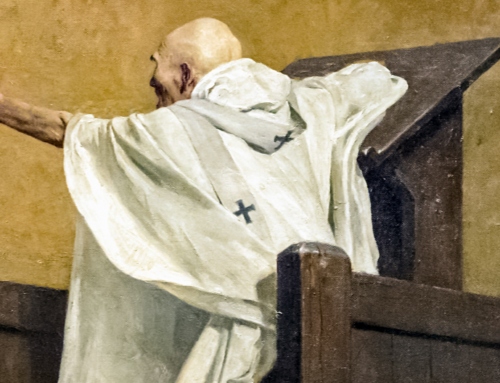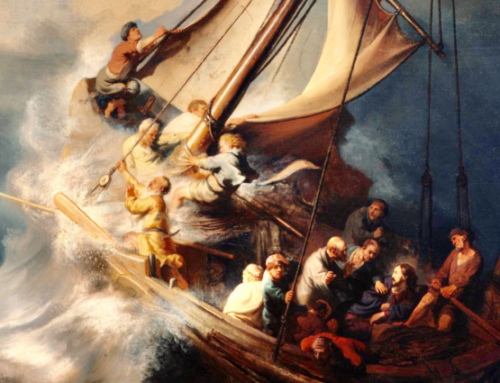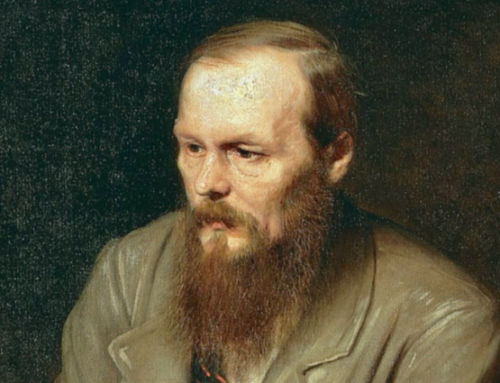Andrei Tarkovsky’s film Stalker is about a man who leads others, however obliquely, and despite obstacles, both external and internal, to faith. Faith is faith. Without it, man is deprived of any spiritual roots. He is like a blind man.
Just more than thirty years ago, on 26 April 1986, a nuclear disaster occurred at the Chernobyl Nuclear Power Plant. For days after the accident, large quantities of radioactive waste were released into the atmosphere and spread from the Ukraine, then part of the Soviet Union, to Western Europe and beyond.
It was reported that 31 people died in the days following. Subsequently, many more developed cancers whose suspected origin was exposure to the large doses of radiation from the damaged nuclear reactor.
Immediately after the accident, the Soviet military started to evacuate a large area of land in and around the power plant. Over 30 square kilometers were later designated as the Zone of Alienation. Within this, on maps, three colour-coded areas were marked: the Blue Zone, signifying the lesser-affected area; the Red Zone, indicating greater contamination; finally, there was the Black Zone. Here it was ordered that mankind should never again enter.
***
Eight years earlier, in April 1978, a Soviet film crew had made its way to a disused power plant in the then Soviet Republic of Estonia. For the next five months, the crew would film. On their return to Moscow, the filmmakers found that the film stock was corrupted in such a way as to make it unusable. They returned to Estonia to film once more amid the post-industrial chemical waste. The film would be called: Stalker.
What was it?
Did a meteor fall down?
Was it a visitation from beings from space?
… In our little country appeared the greatest miracle of miracles – the ZONE.
We sent troops immediately.
They did not come back.
Then we surrounded the ZONE with police cordons…
And, I suppose, that was the right thing to do…
Actually, I don’t know, I don’t know…
With these words the film opens…
There has been much written about Andrei Tarkovsky’s 1979 movie. The film’s premise is that there has been some sort of catastrophe that has altered the environment irrevocably. The parallels with what came to pass many miles away in the Ukraine are all too obvious. The film has been seen as a precursor of the future events at Chernobyl, a strangely cinematic act of prophecy. There really is now a Zone where humanity is forbidden to enter. If so, is there more contained within the frames of Stalker than at first appeared?
Stalker was, and is, billed as a Sci-Fi movie. Coming barely a year or so after Star Wars, it could not be more removed from the world of spaceships and lasers. Like many sci-fi films, Stalker is about ideas. More than this, however, it is, ultimately, a film about faith. The journey undertaken by three protagonists–a journey that passes though time as much as through space – is essentially a movement to the center of the characters’ souls. The only thing is that two of those engaged on this journey are unsure whether they believe in the existence of a soul.
The Stalker of the title is, as with so much in this film, a mystery. Even when the final frames conclude, the mystery of the Stalker’s identity has only deepened. The audience is left to start their ‘cinematic archaeology’, sifting the impressions that the film has left behind. The one thing we do know about the mysterious Stalker is that he brings people into the Zone and that in that place there is a room in which all desires are satisfied. What is required to enter that room, but what so few possess, is faith.
The Stalker has two companions in the film: the Writer and the Scientist–figures whose work defines them as the epitome of what was then Soviet elite. The Writer is jaded by sensual pleasure; he is looking for something, though what that is, exactly, he is unsure. The Scientist is less open about his motives for undertaking the journey. These only become clearer as the plot unfolds. About one thing, however, the Stalker is adamant: once in the Zone, he and his companions can only travel forward; they cannot return from whence they came. Their journey must press forward to a conclusion.
In the middle of the Zone, the audience hears a voice. It is not clear whose voice it is or, indeed, who hears it. The words spoken are from the Book of the Apocalypse. There is then a sequence where the three rest and fall asleep. As the Stalker awakes with renewed purpose, he starts to recount the episode on the road to Emmaus from the Gospel of St. Luke. The camera drifts over the stagnant contaminated waters around the Zone as he speaks, and we glimpse artefacts of the civilisation that once existed there. Among these is an icon taken from an altar, upon it, the image of the Saviour. It is a ‘clue’ given as to the Stalker’s identity and role: he is called a Holy Fool. He is placed, therefore, within the Eastern tradition of those who are seemingly foolish being graced with a greater wisdom and insight than ‘the wise’. The question then starts to form: towards what is this Holy Fool leading the rationalist scientist and the debauched artist?
There are further peculiar touches to an already strange film: the world we enter at the beginning appears post-Apocalyptic. The world of the everyday in which the film opens is shot in shadowy sepia-tinted monochrome; the Zone, by contrast, is brightly coloured, vivid, radiant – reminiscent of C.S. Lewis’s use of colours and monochromes in The Great Divorce to represent respectively a fallen world and heaven itself.
The film has intrigued and infuriated critics since its initial screenings. The West got its first look at Stalker in 1980 at that year’s Cannes Film Festival. The then film critic of The Times summed up what many thought:
It is never quite clear what they had hoped to discover in the Zone, except that it has something to do with hope and faith…
Tarkovsky, by then the darling of Western critics, had made a number of films that had examined the concept of faith, either explicitly or implicitly. When asked about what sort of ‘faith’ he was referring to in Stalker, he said the following:
Faith is faith. Without it, man is deprived of any spiritual roots. He is like a blind man. Over time, faith has been given different content. But in the period of the destruction of the faith, what’s important to the Stalker is to light a spark, a belief in the hearts of people.
***
In April 1974, a few hundred miles south east of Rome, a philosophical conference was taking place at the Medieval Abbey of Fossanuova. Whilst there, one of the visiting professors had a revelation during Mass. Immediately, he told his wife. When he had done so, she said she wanted to hear nothing more of it, so fantastic did it seem. Nevertheless, that morning, the professor, who had all his life dedicated himself to the study of logic, sought out another of the conference’s participants, a fellow Pole. He found him alone. The professor approached the younger man and exclaimed: ‘You will become Pope!’ The recipient of the message looked gravely at his friend and, saying nothing, turned and walked away, absorbed in prayer.
During the filming of Stalker, two Popes were to reign. When the shoot started, Pope Paul VI was alive; by the time the crew had finally wrapped, Paul VI’s successor, Pope John Paul I, was lately dead. In the barren, post-industrial wasteland of the then Brezhnev Soviet Union, the filmmakers were making something greater than dialectical materialism allowed, something more transcendent than parroted political slogans; it was about something more enticing than the historical and economic reality that the masses had been told alone existed. The film’s subject was couched in heavily veiled philosophical terms, but filmgoers in Moscow and elsewhere recognised all too clearly what was really being spoken of on screen. The camera had caught the sense of ‘hunger’ within the soul of the Socialist ‘new man’ trapped in a ‘black-and-white world’ but craving ‘colour’- something then fenced off from him by barbed wire, yet seemingly existing still in the mythic Zone.
In the film, the Zone is a place that the authorities fear: indeed, they prevent people from going there. Yet the Zone is a place where, as the Stalker tells those who wish to enter, there is a room where all can, at last, find fulfillment. Sixty years of Communism had told the masses that true fulfillment lay in the State. This was indeed a lie, for, as suggested in the film, only by escaping the State-imposed prohibitions against faith, and the mental and emotional limits imposed by communal unbelief, could humanity ever hope to enter the fullness of Life and see the ‘colours’ promised in the Zone.
One of the last public acts of the then Cardinal Wojtyła before he left for Rome to attend the conclave following the death of Pope John Paul I was to consecrate the parish church at Nowa Huta. In what was originally designed to be a godless Workers’ Paradise, Cardinal Wojtyła had built a church. In it, there was a ‘room’, a tabernacle, which contained the Blessed Sacrament. The church, with this tabernacle at its heart, proved to be a ‘zone of faith’, one that invited an interior response from believers and unbelievers alike; it was, ultimately, a zone that the authorities could do little to prevent people entering.
In the following year after the consecration of the church building at Nowa Huta, Wojtyła flew to the Rome. Never again would he live in his homeland.
In 1971, during an interview, Tarkovsky said:
Whether they are good or bad, in the final analysis my films are about one thing: the extreme manifestation of faith…the fight for it…I am interested in a hero, going on to the end, regardless of everything, for only such a man can triumph.
Tarkovsky’s film was about a man who leads others, however obliquely, and despite obstacles, both external and internal, to faith. A month after the end of the filming of Stalker, Karol Józef Wojtyła was elected Pope. In this Slavic Pope, the world was to discover a hero of faith who would lead a continent into that ‘Zone’ of faith; and, as he did so, the atheistic Soviet Empire met its nemesis.
Republished with gracious permission of The St. Austin Review (July/August 2017).
The Imaginative Conservative applies the principle of appreciation to the discussion of culture and politics—we approach dialogue with magnanimity rather than with mere civility. Will you help us remain a refreshing oasis in the increasingly contentious arena of modern discourse? Please consider donating now.
Editor’s note: The featured image is a frame from the film “Stalker.”








Tarkovsky came to Glasgow to the Glasgow Film Theatre, for a showing of Stalker and a question and answer session afterwards. He was on stage with an interpreter and a soviet minder. I think this was sometime in 1981. The discussion was poor as the audience seemed largely baffled by the film. One questioner asked him why he made science fiction films and he said it wasn’t science fiction since he did not like the genre.
Then someone stood up at the back, and started shouting, screaming almost. How dare you make a Christian film in this day and age. I was reminded of the demoniacs in the Gospel. Tarkovsky said quite simply. ‘I made a Christian film because I am a Christian’. This was liberating for the audience who then started asking some real questions about the film, many being willing to admit to sharing his Christian faith. The soviet minder looked more and more desolate throughout.
I like this story very much. Thank you Father.